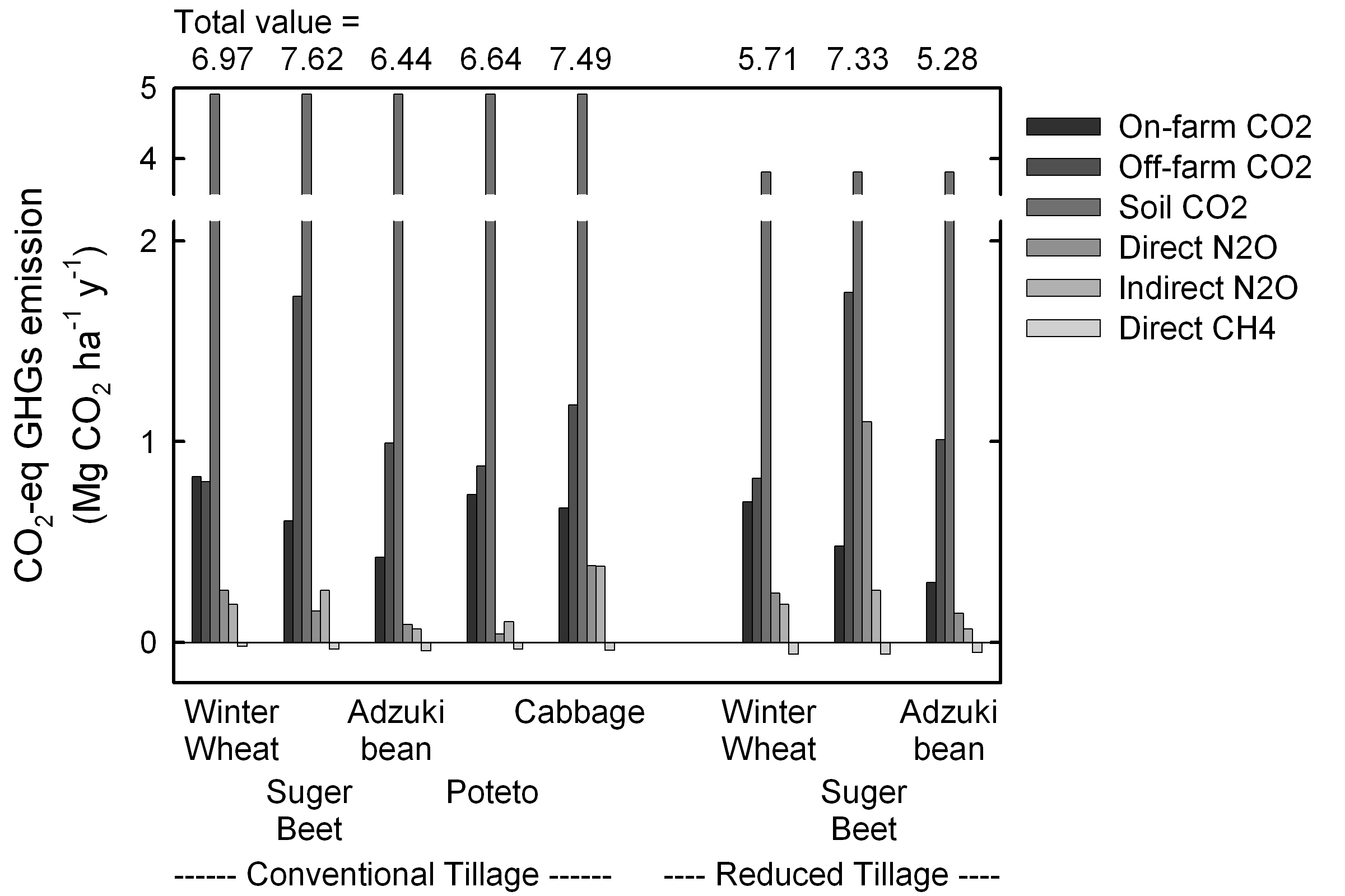
Saturday, 15 July 2006
138-75
Greenhouse Gases Emission from Arable Land Cropping Systems of the Tokachi Region of Hokkaido, Japan - Importance of Soil Organic Matter Decomposition.
Takuji Sawamoto, Faculty of Dairy Science, Rakuno Gakuen Univ, 582 Midorimachi, Bunkyodai, Ebetsu, 069-8501, Japan, Nobuhisa Koga, National Agricultural Research Center for Hokkaido Region, Shinsei, Memuro, 082-0071, Japan, and Haruo Tsuruta, Center for Climate System Research, The Univ of Tokyo, 5-1-5 Kashiwanoha, Kashiwa, 277-8568, Japan.
Total GreenHouse Gas (GHGs) emissions from agricultural production in arable land cropping systems of the Tokachi region of Hokkaido, Japan, were estimated. The soil in this region is an Andisol. The data included on-farm and off-farm CO2 emissions from fuel consumption, soil CO2 emissions induced by the decomposition of soil organic matter, direct and indirect N2O emissions and direct CH4 emission, which were then aggregated in CO2-equivalents (N2O=296CO2, CH4=23CO2). Hereafter, the values of emission are expressed as Mg CO2 ha-1 y-1. Under plow-based Conventional Tillage (CT) cropping systems for Winter Wheat (WW), Sugar Beet(SB), Adzuki Bean (AB), Potato (PO) and Cabbage (CA), on-farm CO2 emissions from fuel-consuming operations such as tractor-based field operations, truck transportation and mechanical grain drying ranged from 0.424 for AB to 0.826 for WW. Off-farm CO2 emissions resulting from the consumption of agricultural materials such as chemical fertilizers, biocides and agricultural machines were estimated by Input-Output Tables to range from 0.800 for WW to 1.724 for SB. Full-year measurement of direct N2O emissions showed a positive correlation with N fertilizer application rates, and ranged from 0.041 for PO to 0.382 for CA. Indirect N2O emissions due to N leaching and surface runoff were estimated to range from 0.069 for AB to 0.381 for CA. Full-year measurement of direct CH4 emissions showed negative values, and ranged from -0.042 to -0.020. From the difference in total soil C pool (0-20 cm depth) between 1981 and 2001, annual CO2 emissions from CT and RT soils were estimated to be 4.91 and 3.81, respectively. In total, CO2-equivalent GHGs emissions under CT cropping systems were 6.97, 7.62, 6.44, 6.64 and 7.49 for WW, SB, AB, PO and CA production, respectively. Soil-derived CO2 emissions represented large portions (64 to 76 %) of total GHGs emissions. Under reduced tillage (RT) cropping systems, plowing after harvesting was omitted, and total GHGs emissions from WW, SB and AB can be reduced by 18, 4 and 18 %, respectively, as a result of lower rate of organic matter decomposition in the RT soil and saving fuels used for plowing.

Back to 2.2A Soil Organic Matter: Stabilization and Carbon Sequestration - Poster
Back to WCSS
Back to The 18th World Congress of Soil Science (July 9-15, 2006)